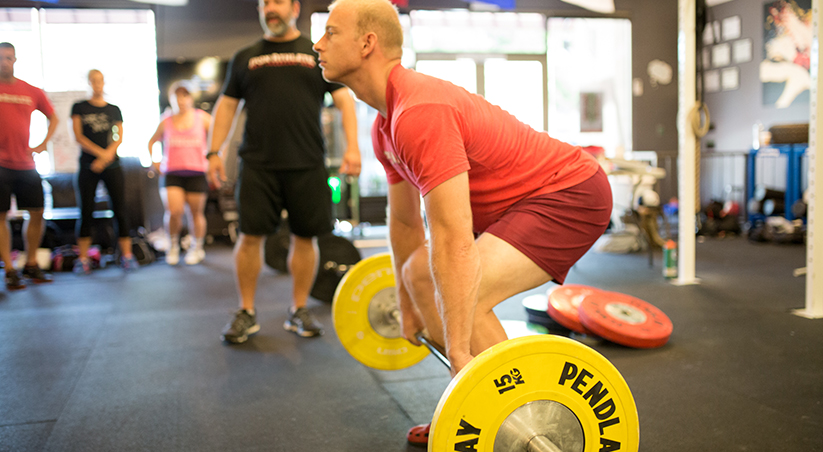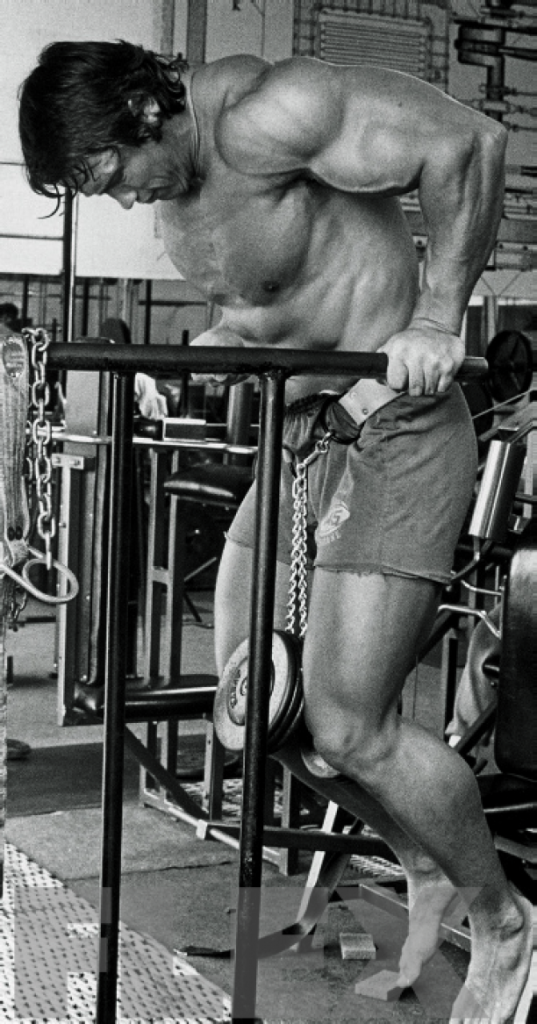In the most basic terms, Hypertrophy refers to an increase in the size of a…

Slow Down Your Strength Training
No matter what type of gym you go to, no doubt you will see the individual who is moving the weight around at lightning speed. While there is certainly a time and place for that sort of training, before you try and emulate them you need to consider what your goals are. If you goal is strengthen a muscle and add muscle mass, slow may be better. The problem with moving through movements quickly is that you not only rob your muscles of an opportunity to grow, but you can also be hindering their ability to get stronger.
Let’s start with an anatomy lesson before we get too ahead of ourselves. During an exercise where the weight moves through a full range of motion, the muscle experiences a concentric and eccentric contraction. During the concentric contraction, the muscle is activated and required to lift a load less than its maximal ability, causing the muscle to shorten. On the flip side, an eccentric contraction is when the muscle is active while lengthening. Take for instance a military press. During this movement, the weight is pressed overhead and the deltoids and triceps are shortened to do so. This is the concentric phase of the movement. Bringing the weight back down, the eccentric phase, involves the deltoids and triceps lengthening while still controlling the weight.
So why is the eccentric contraction so important? For starters, most of the muscles normal activity occurs while it is lengthening, which can lead to greater strength gains. Another important fact is that muscle injury and soreness are associated with eccentric contractions. Before you get after me for thinking I am trying to hurt you, let me explain. Anytime you strength train, you are actually creating microtrauma in the muscles, tearing the individual fibers. While you rest, the muscle works to repair itself, becoming stronger than it once was. Lastly, muscle strengthening may be greatest using exercise that involve eccentric contractions. This thought is based on the sliding filament theory which leads us to believe that as the muscle is lengthened, the cells of the fibers are stressed and ultimately leads to a stronger muscle. In order for a muscle to grow, it has to be exposed to high tension. This is where you might have heard the adage of time under tension. The muscle has to be placed under a certain amount of tension to break it down and require it to heal.
How can you incorporate eccentrics into your training?
Don’t let gravity take the weight down for you. Take the time to lower the weight in a controlled manner, even doing so to a certain pace. Some strength coaches will advise their athletes to follow particular tempo training protocols such as 3-0-1-0. That means that you perform the eccentric portion of the lift for 3 seconds, spend 0 seconds at the midpoint of the movement, 1 second for the concentric portion of the lift, then another 0 second interval at the end of the movement.
Don’t be afraid of DOMS
Delayed onset muscle soreness is more likely to occur following a session focusing on eccentrics because there is a higher likelihood of breaking the muscles down. The more your body adapts to training the less likely you are to be affected by it. A systematic review out of the International Journal of Sports Physical Therapy determined that foam rolling can decrease DOMS after intense exercise.
Rest
If you really want to take your training seriously, make sure to focus on rest. Sleep is crucial to improving muscle strength and size because the muscles repair while you are sleeping. Also, avoid training the same muscle in back to back training sessions to allow ample time for it to heal.
In conclusion, make sure that you determine your goal when performing an exercise. As a crossfitter, are you deadlifting to gain strength or as part of a WOD? If your goal is to complete a workout as fast as possible, then proceed to allow gravity to assist you in that, as long as you are performing the movement safely and appropriately. For the weightlifters and powerlifters out there, are you performing an exercise for sport or as an assistance exercise? Having an understand and purpose for what you are doing in the gym will lead to future success.
References
Beardsley, C., & Škarabot, J. (2015). Effects of self-myofascial release: A systematic review. Journal of Bodywork and Movement Therapies, 19(4), 747-758. doi:10.1016/j.jbmt.2015.08.007
Mike, J. N., Cole, N., Herrera, C., Vandusseldorp, T., Kravitz, L., & Kerksick, C. M. (2017). The Effects of Eccentric Contraction Duration on Muscle Strength, Power Production, Vertical Jump, and Soreness. Journal of Strength and Conditioning Research, 31(3), 773-786. doi:10.1519/jsc.0000000000001675
Nosaka, K., & Newton, M. (2002). Concentric or eccentric training effect on eccentric exercise-induced muscle damage. Medicine & Science in Sports & Exercise, 34(1), 63-69. doi:10.1097/00005768-200201000-00011


